AMD Radeon VII Review: Still A Lot Of Room For Improvement
My initial impression of AMD’s Radeon VII graphics card was less than stellar. The card clearly has potential, but it’s clear to see that AMD was in a hurry to get the card out, as evidenced by its CES 2019 keynote.
This review is more than a little late, but I’ve spent a bit more time with the graphics card since my first look at it. In that time, I made attempts to push the card a little past its default boost clockspeed. So, without further ado, let’s jump right into it.
Design
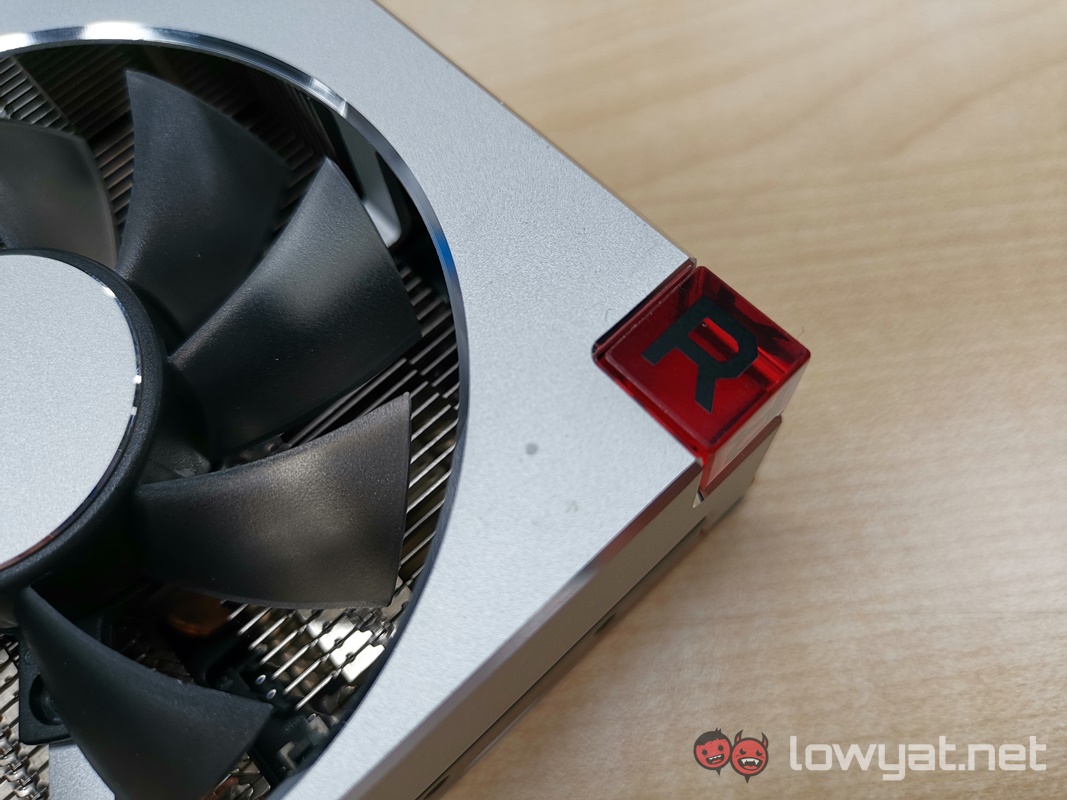
I won’t spend too much time talking about the design of the Radeon VII, as I’ve already done so in my first impressions with the card. As a quick recap, the Radeon VII is AMD’s latest enthusiast level graphics card for the current market. Theoretically designed to go toe-to-toe with NVIDIA’s GeForce RTX 20 series graphics card.
It’s not an overstatement to say that the card is nothing short of an engineering marvel; AMD has beaten NVIDIA to the punch and fulfilled its promise (somewhat) of churning out what is the world’s first 7nm GPU architecture.
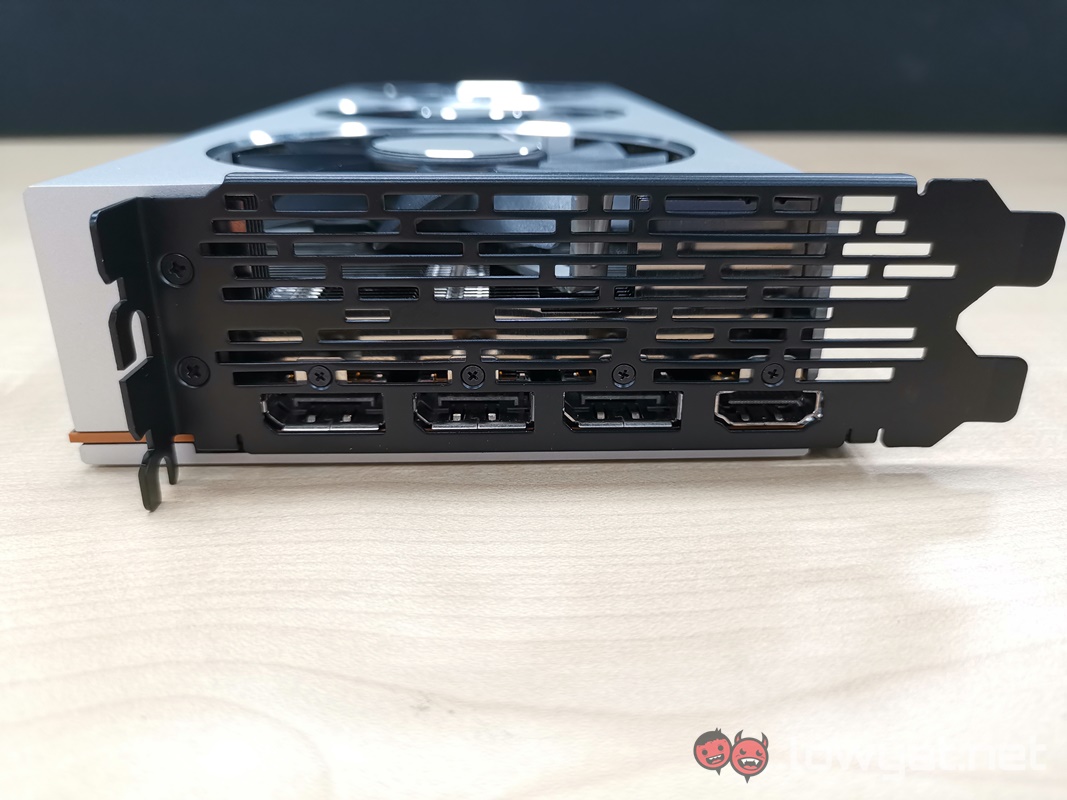
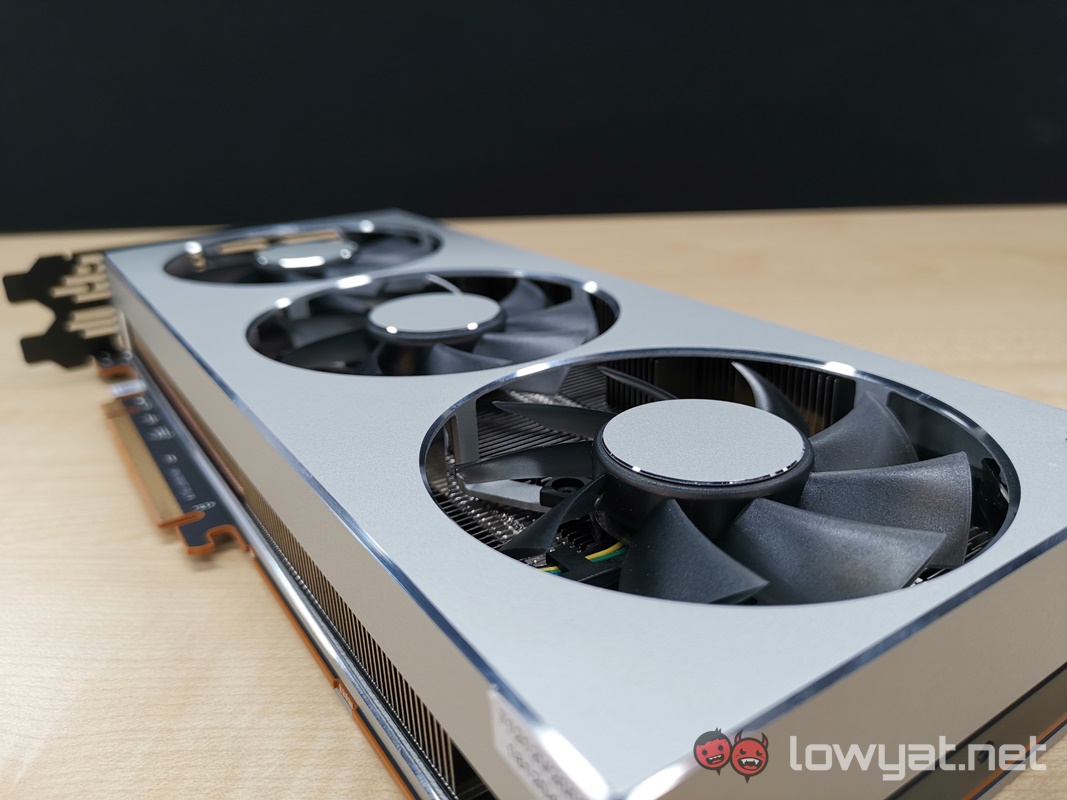
Sadly, the GPU isn’t highly anticipated Navi GPU architecture that AMD fans are waiting for. Instead, the GPU is just an “enhanced 2nd generation” variant of the current Vega GPU architecture. To that end, however, AMD has given the Radeon VII a generous 16GB of HBM2 graphics memory, running at a boost clock frequency of 1.8GHz and a 1TB/s memory bus.
Moving on, I like how AMD has reverted back to the same dusted aluminium shroud design that it first introduced with its dual Hawaii XT-based graphics card, the Radeon R9 295X2. Yes, the design does look a bit plain, but to be fair, AMD’s reference cooler designs are kind of timeless.
Specifications
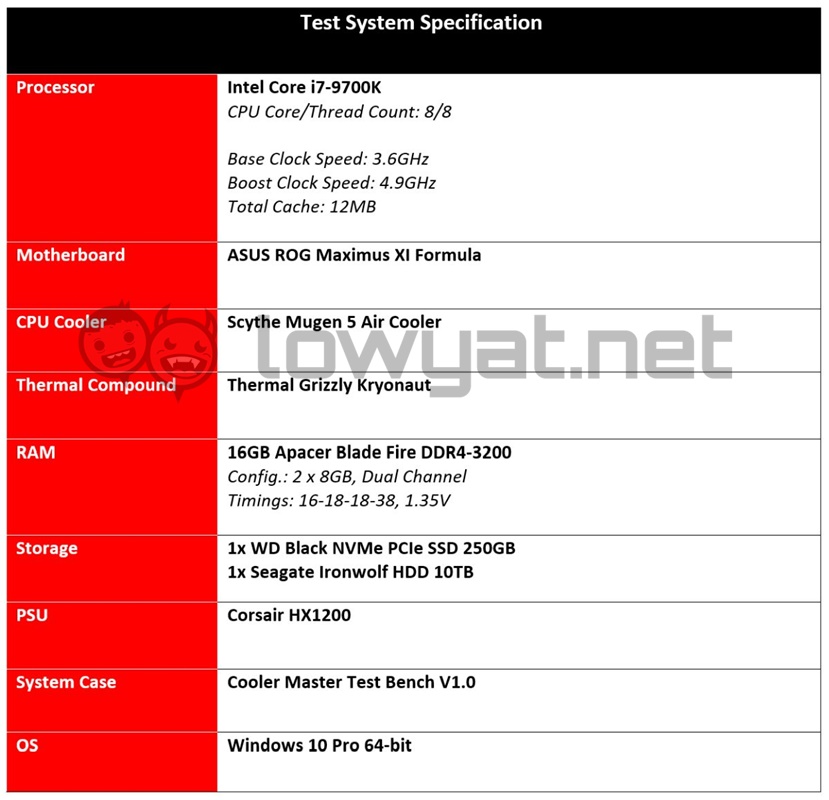
Just as before, the hardware specification I used for the initial testing of the Radeon VII remains unchanged. Also as per my first impression, the card that I will be benchmarking the Radeon VII against is NVIDIA’s GeForce RTX 2080 Founders Edition.
The monitor I am using is also the same as before, which is the Acer Predator X27 4K HDR monitor.
Benchmark
As before, the synthetic benchmarks used in testing the card remain unchanged; I ran UL’s 3DMark program, along with the Unigine Superposition benchmark program. For the real-world tests, I put the cards through four titles, which were Battlefield V (BFV), Deus Ex: Mankind Divided (DXMD), DOOM, and Shadow of the Tomb Raider.
As mentioned before, the Radeon VII clearly lags in the Unigine Superposition synthetic benchmark, and by a significant margin. In UL’s 3DMark’s tests, the card actually manages to turn the tables against the RTX 2080. The only exception to the rule being the Fire Strike Ultra test.
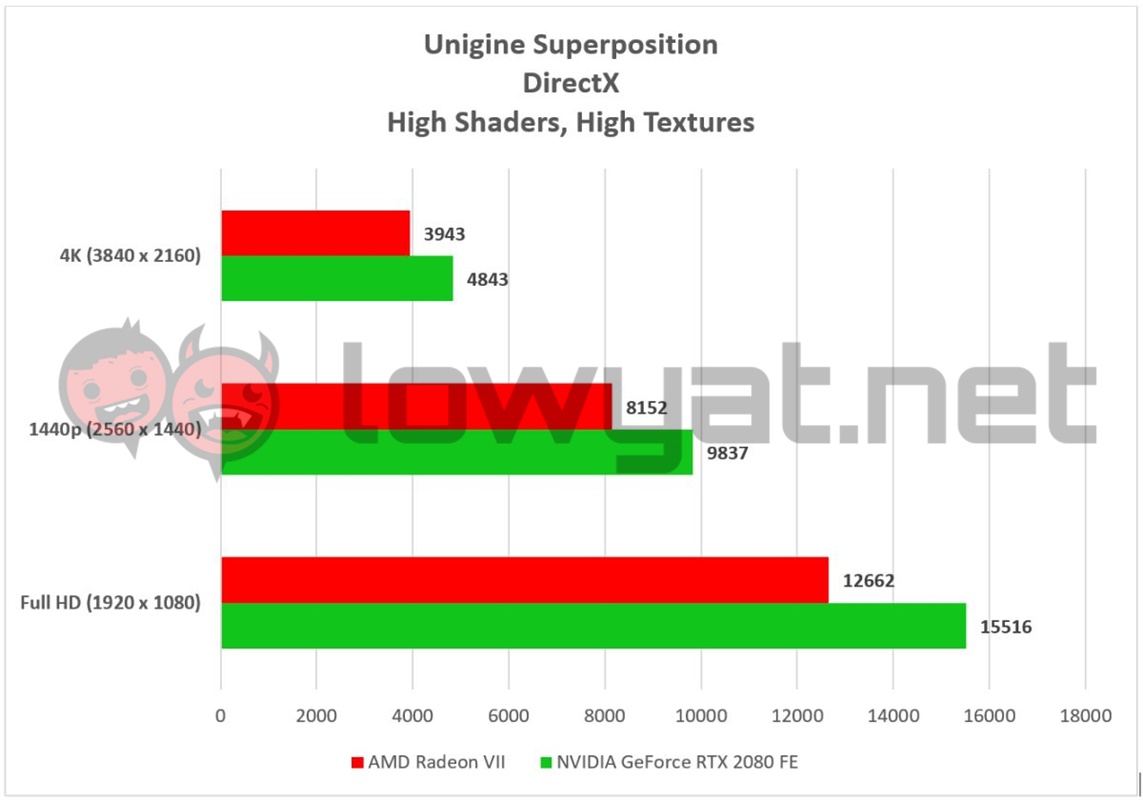
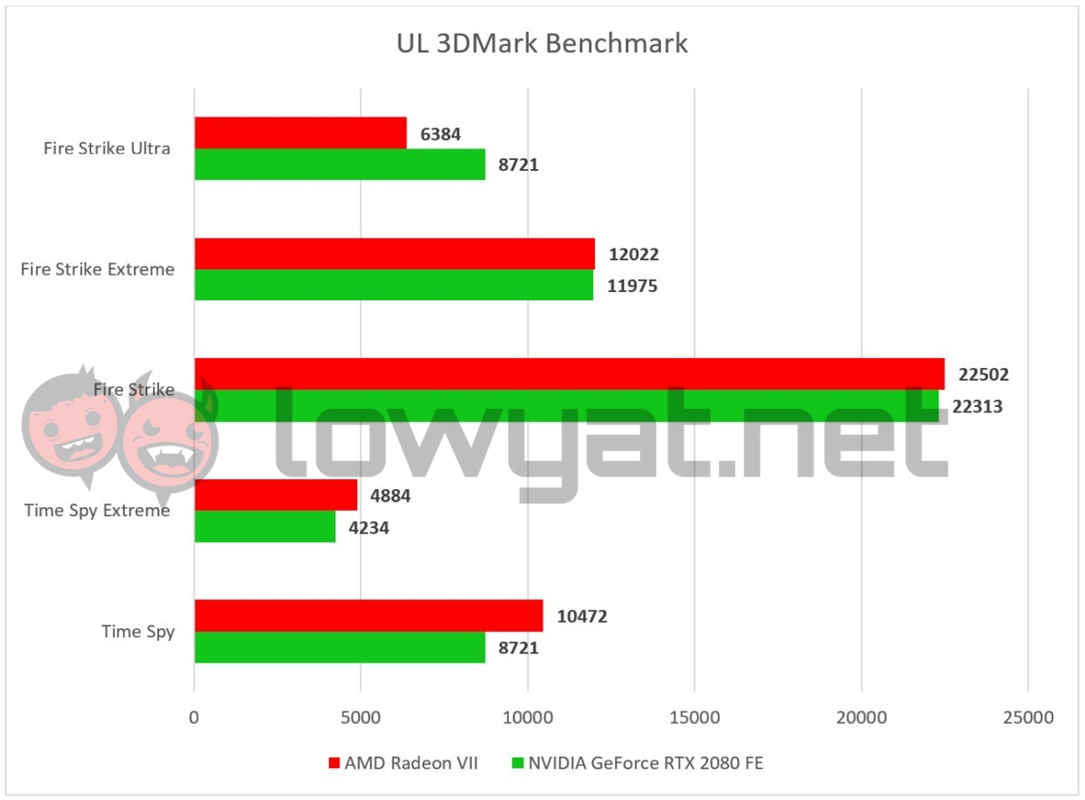
Of course, gaming is where the mettle of a graphics card is tested, and the Radeon VII is capable of holding its own, albeit with some little quirks. The end results are a mixed bag, with the card pulling ahead of the RTX 2080 in a couple of titles while lagging behind in the others.
In a test of raw power, the Radeon VII is right in its comfort zone with Deus Ex: Mankind Divided (DXMD) and DOOM, while the remaining titles – Battlefield V (BFV) and Shadow of the Tomb Raider (SotTR) – were obviously tailored to favour NVIDIA’s RTX range.
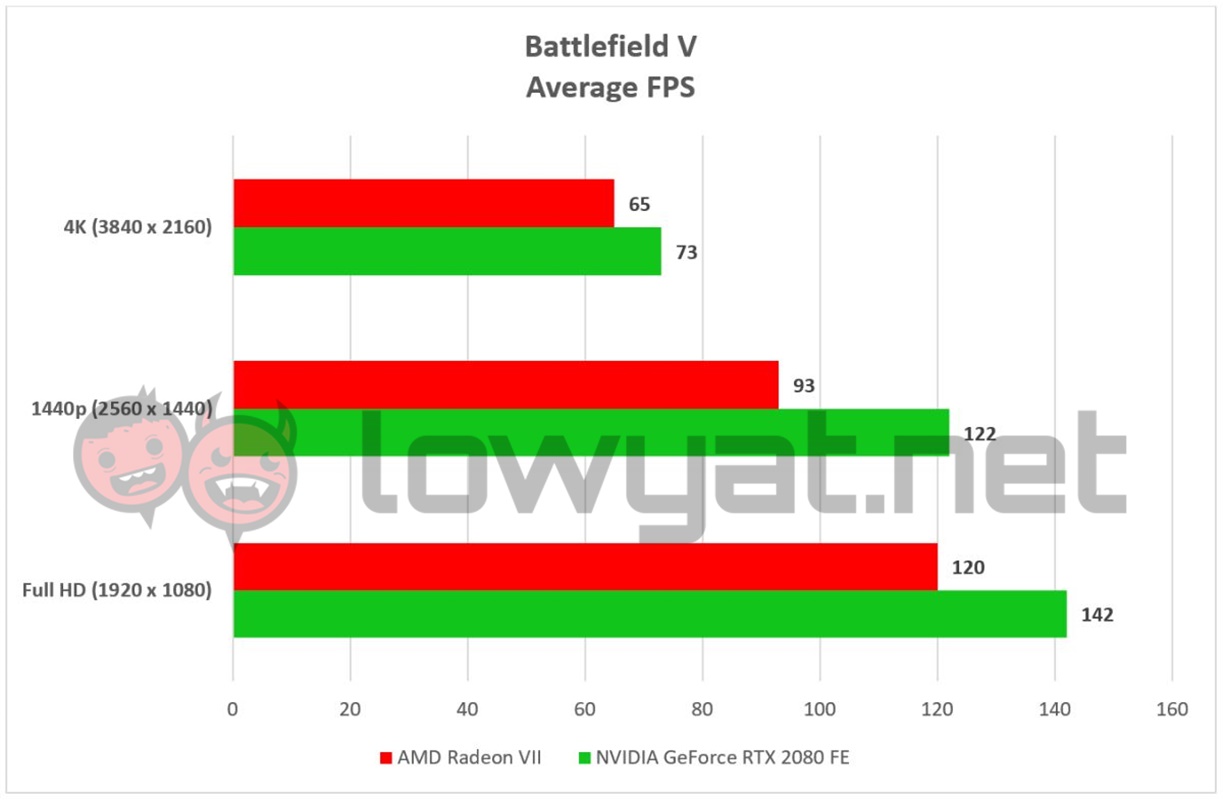
On the subject of BFV, the Radeon VII displayed some sort of “visual stutter” that was prevalent within the title. Initially, I suspected the issue stemmed from the pre-launch drivers AMD provided. But that wasn’t the case; even after updating it to the official launch drivers, the stuttering was still there.
Given the amount of time that has passed since I tested the card, I’m certain that AMD has undoubtedly addressed the issue.
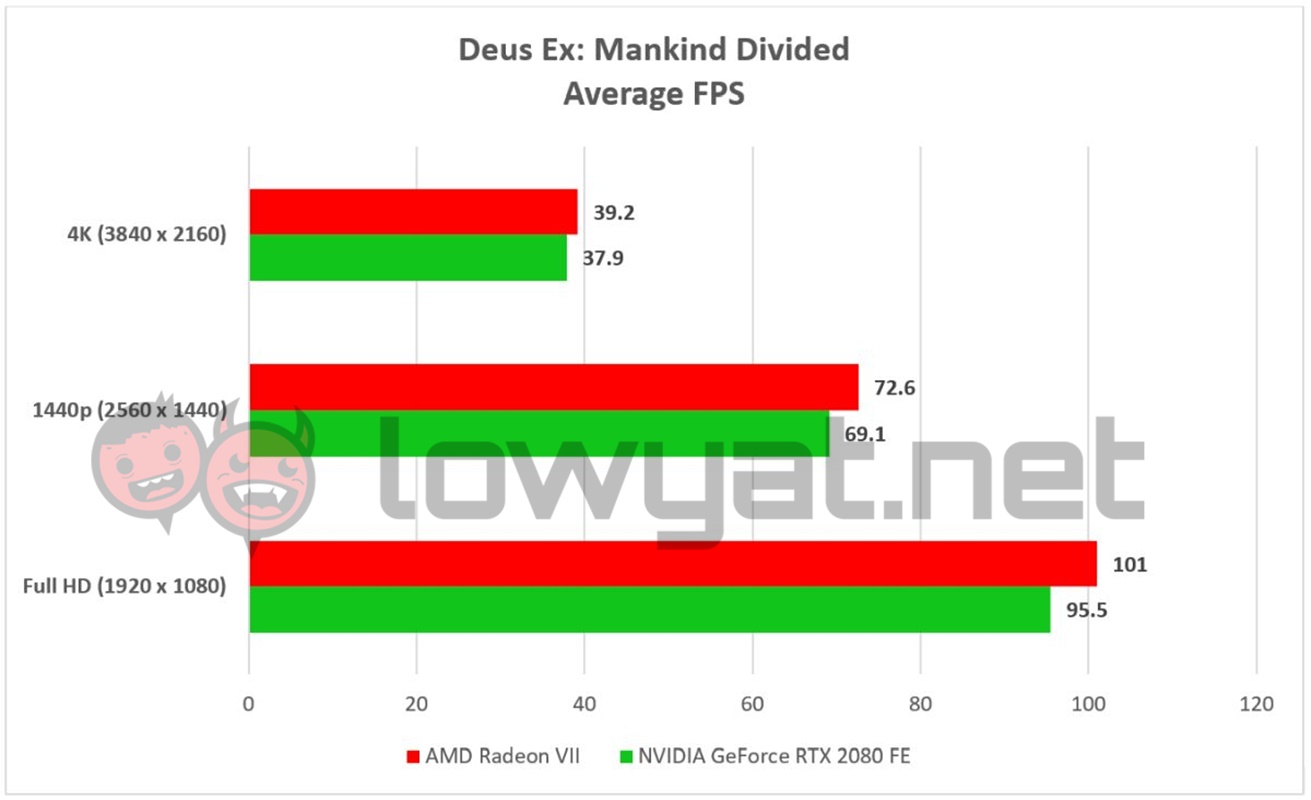
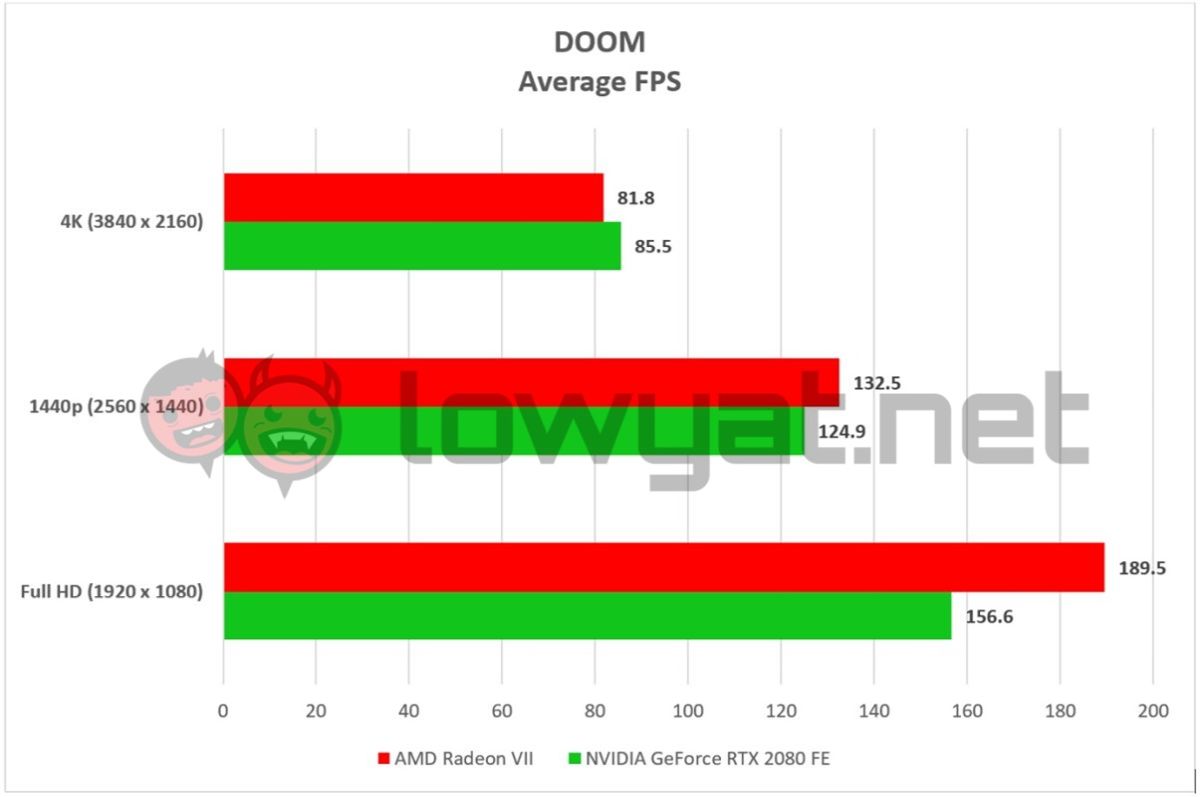
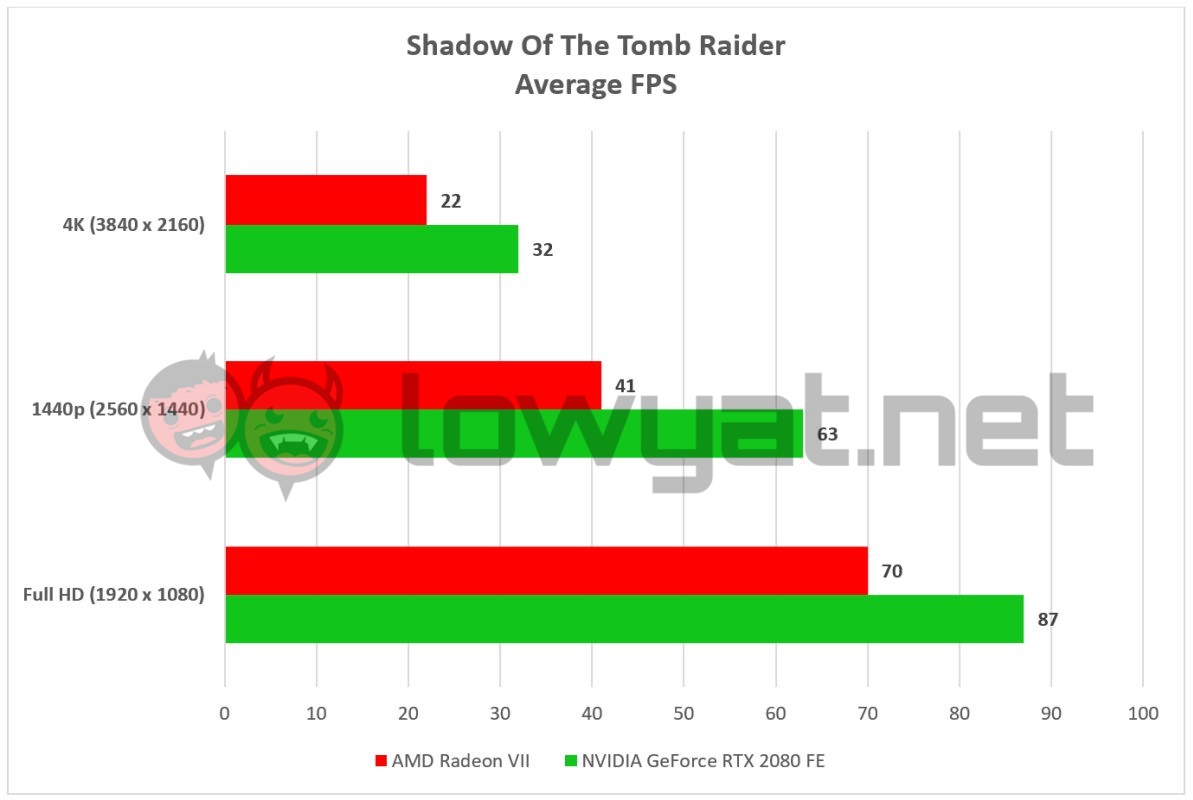
Overclocking
The Radeon VII is one of the trickier graphics cards from AMD that I have overclocked. More so since overclocking for Radeon cards have been restricted to the brand’s own WattMan overclocking tool. On a side note, I like that the new Radeon Software Adrenalin 2019 actually comes with a one-push auto overclocking GPU button, as well as the option to do the same with the card’s memory.
Moving forward, I manually overclocked the Radeon VII and managed to achieve a stable boost clock of 2GHz. However, doing this requires tweaking of the GPU voltage. In the case of this Radeon VII unit, that number hovered between 1145mV and 1211mV. That said, there was a great deal of trial and error getting to this point, and there were even times when the card would crash and fail to run certain benchmarks from the start.
At 2GHz, the Radeon VII did show some visible gains in the synthetic benchmark tests. In 3DMark, the card clearly pulled ahead of its default self in the Fire Strike tests, but fell short in the Time Spy tests. In Unigine Superposition, the card beat its pre-overclock score by a pretty significant margin.
The story is more or less the same in the gaming segment, but the range in framerate gains is quite wide. In BFV, the card in its OC configuration fell behind by several frames compared to its pre-overclocked performance in 4K. But overtook it when the resolution was lowered to 1440p and Full HD.
In DOOM, our Radeon VII showed little to no change in its performance, with the card nearly matching its pre-overclocked performance frame for frame, and while running with the Vulkan API. In SotTR, the overclocking clearly gave it an edge, putting it closer to the performance level of the RTX 2080.
Power Consumption And Thermals

This portion of the review really shouldn’t come as a surprise, but the Radeon VII is anything but a power efficient or cool card. During the review, I found no noticeable difference in the temperatures while running the card pre-overclocked and at 2GHz.
For those unaware, AMD’s current Radeon Software Adrenalin 2019 and WattMan OC tool displays the current temperature of the Radeon VII – core and junction. The core refers to the main GPU, while the junction indicates the overall temperature of the VRM modules surrounding the main module. However, it should be noted that the temperatures indicated are actually inversed; junction values are actually core values, and vice versa.
At full whack, the main GPU was running at temperatures above 100°C, while the surrounding VRM chips peaked between 73°C and 75°C. As for power consumption, the entire system and Radeon VII pulled more than 450W, which is very high, even for a graphics card of this calibre.
Conclusion
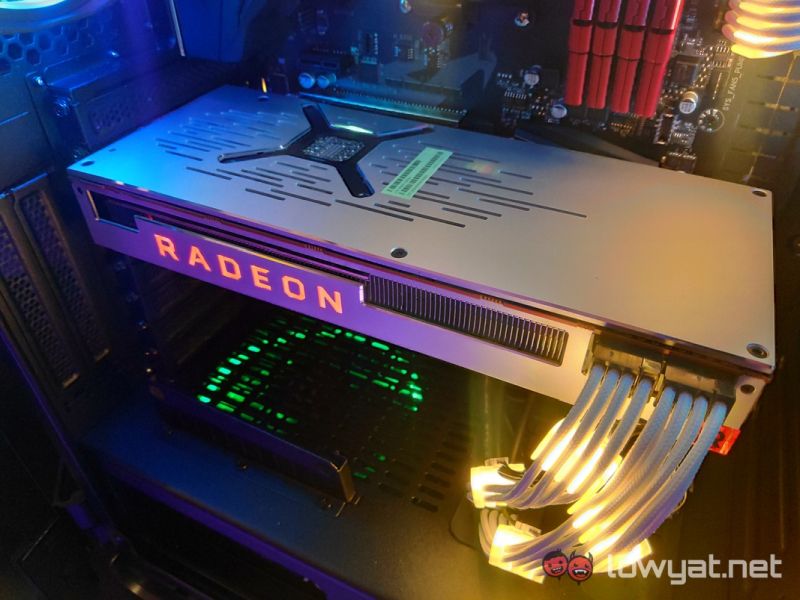
As I’ve said before, the Radeon VII feels like a missed opportunity here; despite the 7nm process node, it’s obvious that the card was released on a whim, hence why it uses an “enhanced version” of the Vega architecture, and is not based on Navi. All is not lost though; AMD can still salvage – if not make the most of – the situation by providing ray-tracing via a software level.
If anything, AMD desperately needs to keep up with the demand for heightened realism in games, brought forward by the institution of real-time ray-tracing, courtesy of NVIDIA and it’s current RTX series GPUs.
On that note, we’ve still got a couple of days to go before AMD’s big reveal of its new Radeon RX 5700 series of graphics card before E3 2019, so we’ll just have to wait and see if the company will finally address the issue.
The post AMD Radeon VII Review: Still A Lot Of Room For Improvement appeared first on Lowyat.NET.
from Lowyat.NET http://bit.ly/2Zd0shj
Labels: Lowyat
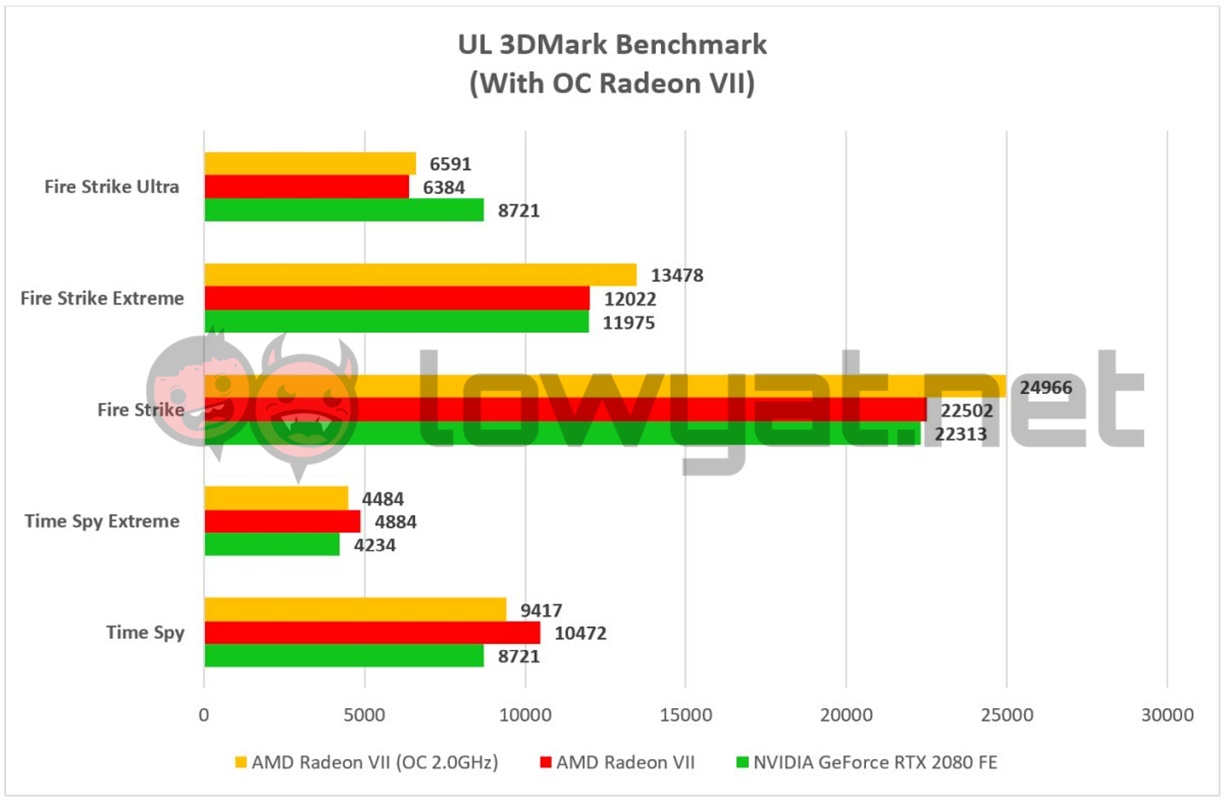
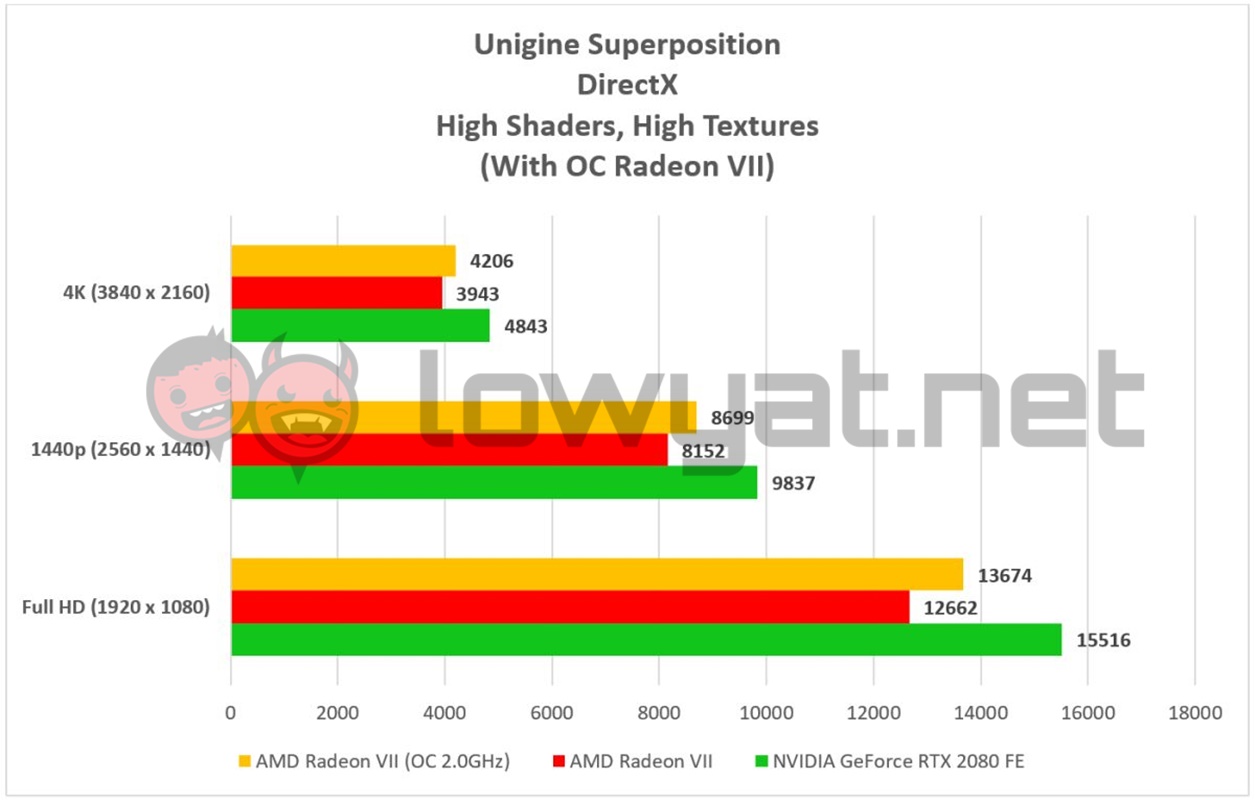
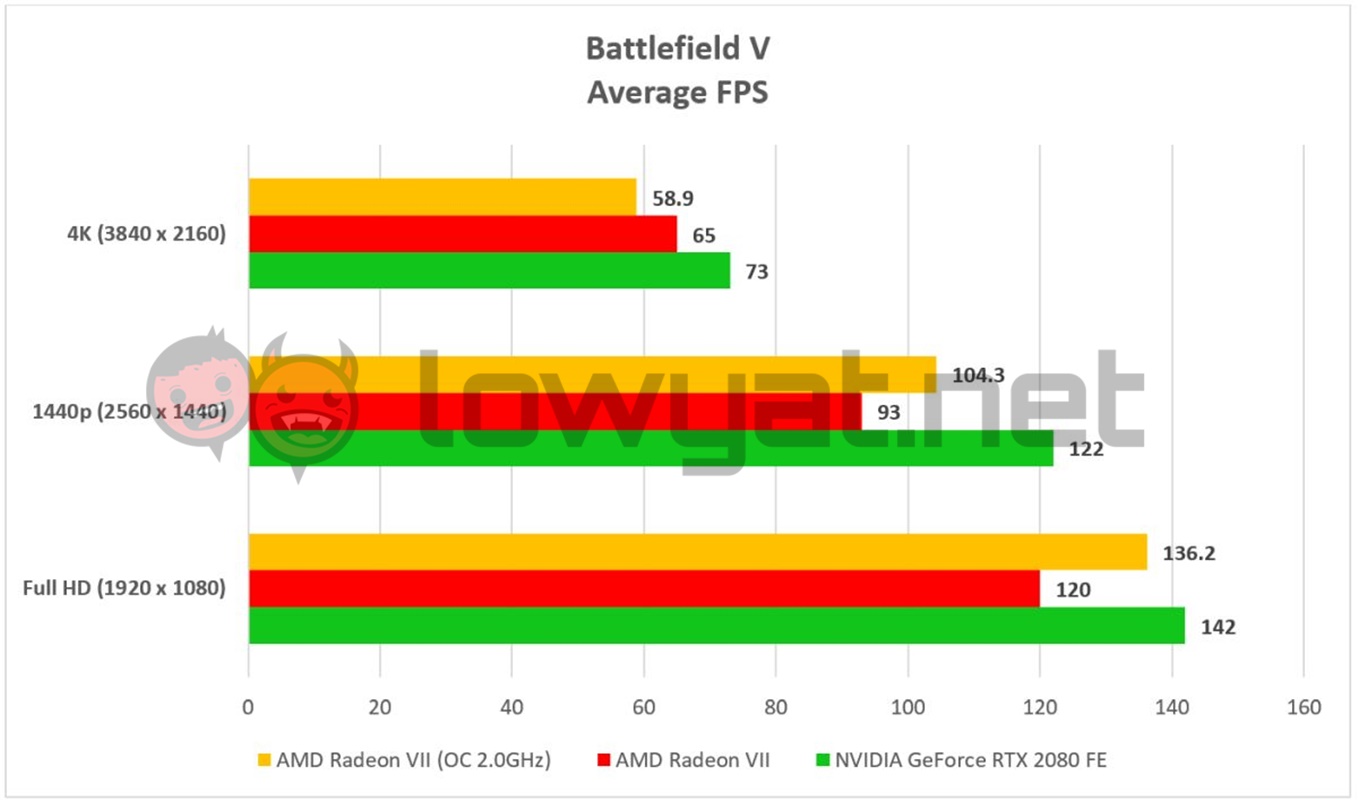
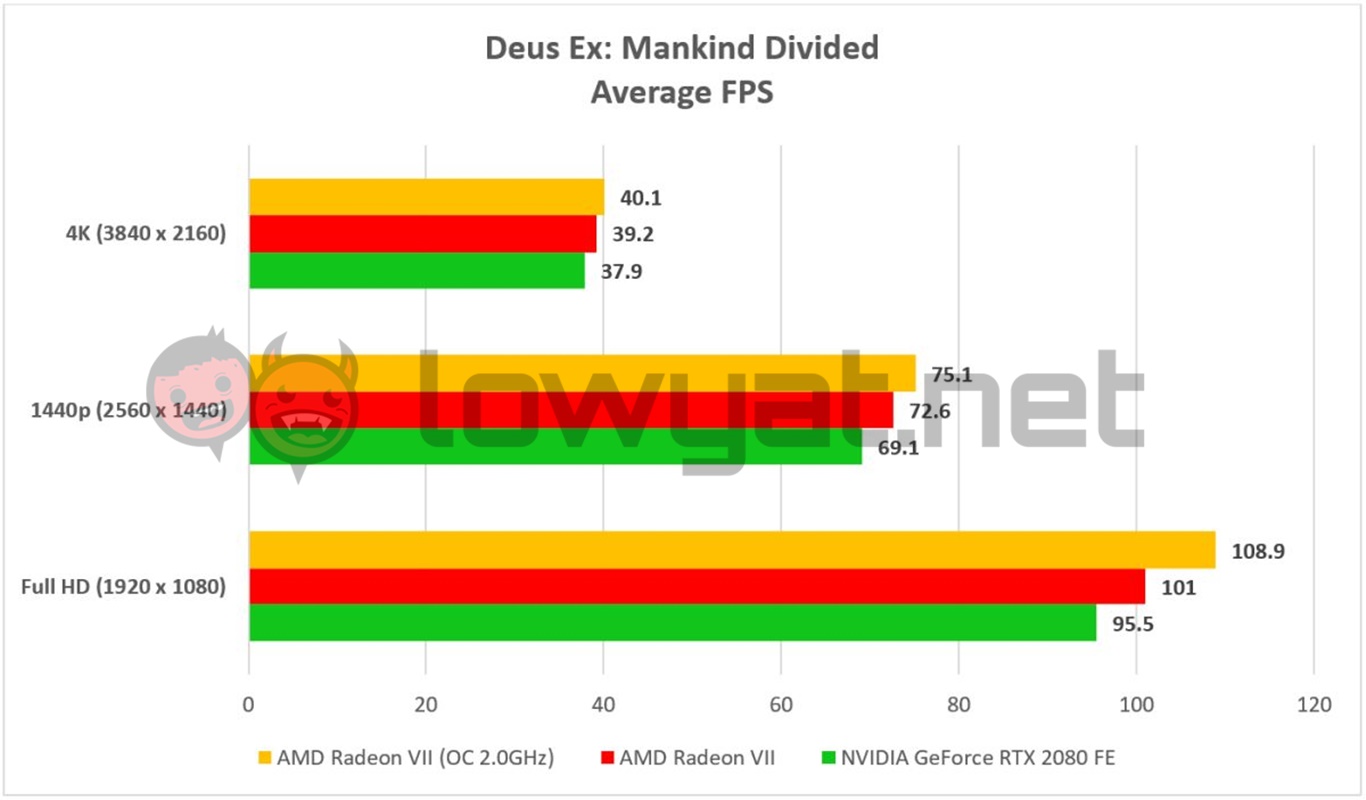
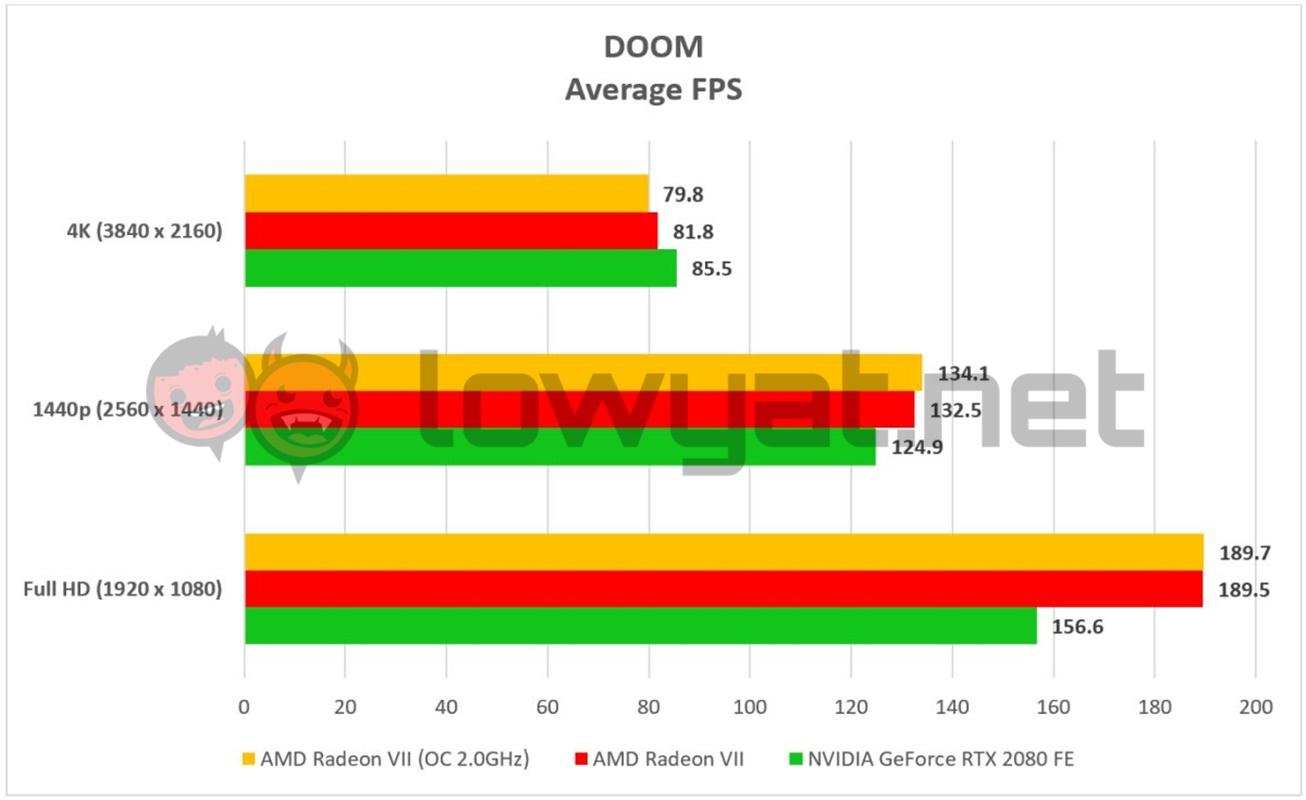
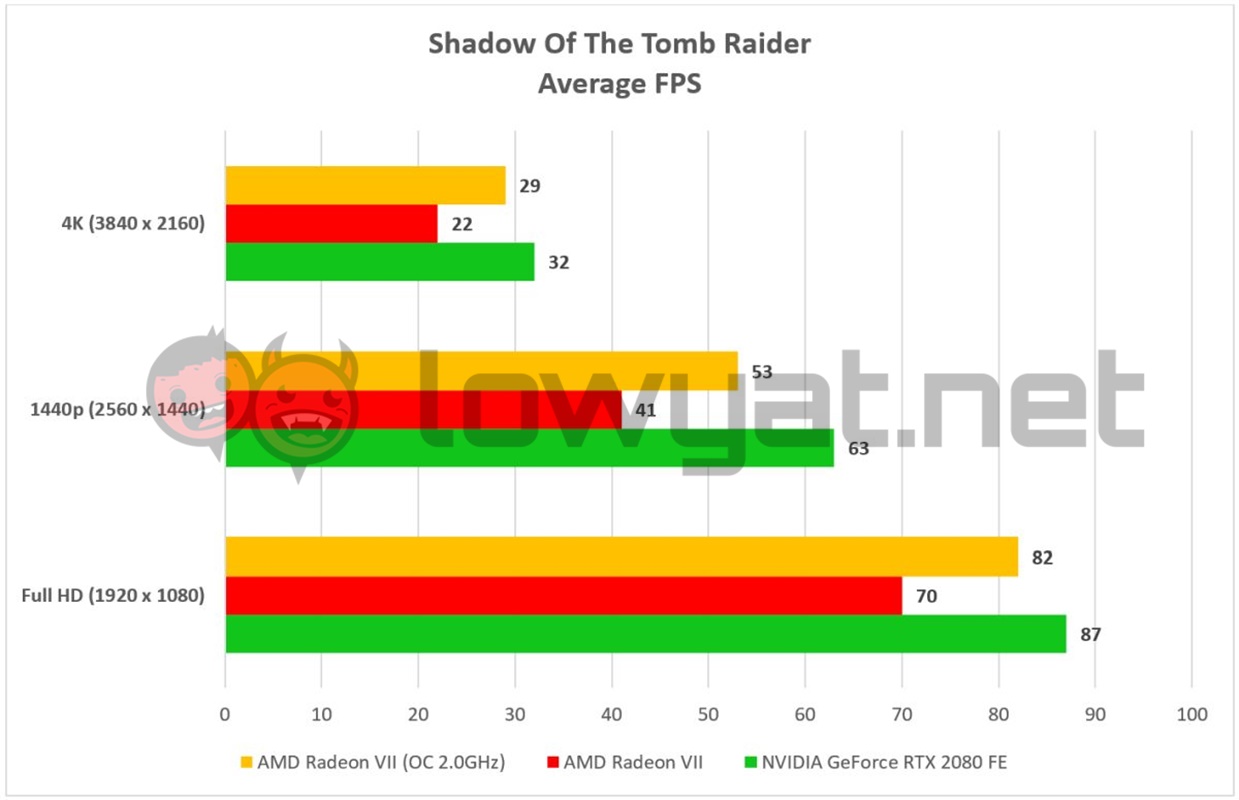
0 Comments:
Post a Comment
Subscribe to Post Comments [Atom]
<< Home